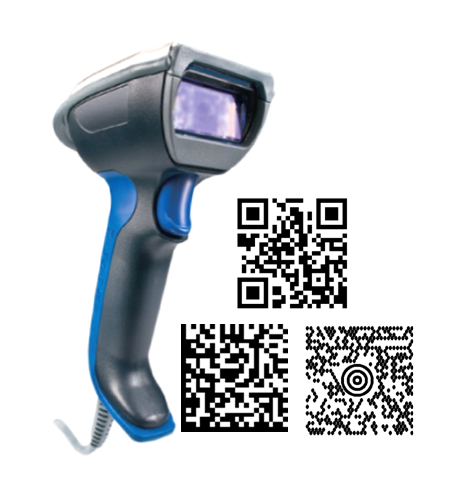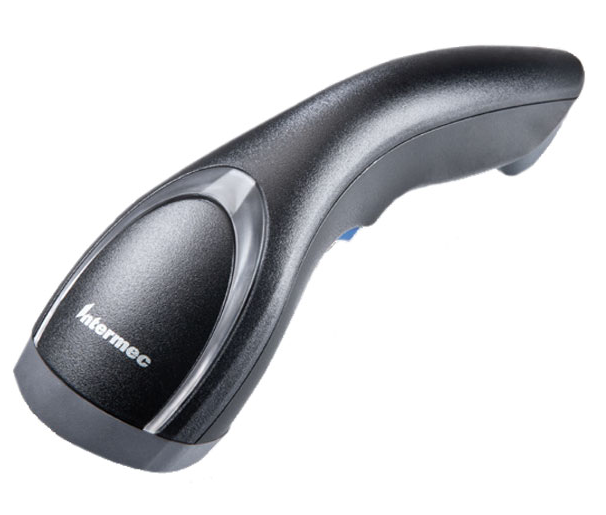Are your Smart Phones Smart Enough?
How Development, Deployment and Management Capabilities Impact Productivity and Value
BlackBerries popularized the smart phone, then the iPhone revolutionized and consumerized the category. Droids are the hottest models today – but that could change tomorrow. Meanwhile, Windows Mobile models continue to outsell other handheld computers used in the enterprise. There is always plenty of buzz about what makes smart phones cool, but enterprises must focus on what makes users more productive.
Why do companies buy smart phones and rugged mobile computers? They do so to:
- Improve productivity and efficiency.
- Increase sales and revenue.
- Improve customer satisfaction.
- Lower operating costs.
Not Barcodes or RFID, but Both
 Leveraging Printer Infrastructure to Reap the Benefits of Converging Technologies
Leveraging Printer Infrastructure to Reap the Benefits of Converging Technologies
Technology has an inexorable momentum, but one that proceeds at a pace determined by utility. Such is the case with barcodes and radio-frequency identification (RFID).
“When technology rolls over you, if you’re not part of the steamroller, you’re part of the road,” said the American writer and editor Stewart Brand. When Wal-Mart issued its famous RFID mandate in 2003, many manufacturers thought they were being steamrolled; pundits saw the mandate as the death knell of barcode technology. Neither the fear nor the forecast has proved accurate.
First, the mandate did not result in a rapid torrent of RFID adoption. Deadlines associated with the mandate have been extended several times because many vendors faced significant difficulties implementing RFID systems, including the relative cost of implementation. The Wall Street Journal published an article stating that the RFID plan set forth by Wal-Mart was “showing signs of fizzling” due to a lack of progress by their executives to introduce the technology to its stores and to the lack of incentives for suppliers.No one was being steamrolled.
How the Right Printer Can Make a Difference for Manufacturers
 Information and documentation are essential components of everything that manufacturers produce and ship today, whether products need to be tracked through the production process or through the supply chain to the customer. Customer requests, regulatory requirements and efficient production processes all need information to flow along with products. While production is often automated, producing the necessary documentation often is not optimized.
Information and documentation are essential components of everything that manufacturers produce and ship today, whether products need to be tracked through the production process or through the supply chain to the customer. Customer requests, regulatory requirements and efficient production processes all need information to flow along with products. While production is often automated, producing the necessary documentation often is not optimized.
Producing the job tickets, component ID and product labels to provide this information is a growing challenge. Unless the process is streamlined with a proper printer and media, manufacturers are building unnecessary cost and inefficiency into every product. This post will explain how manufacturers can realize tangible improvement. It covers:
- How production processes can be improved by using printed labels and job tickets;
- Why sharing a general-purpose printer for office and production printing is an inefficient arrangement;
- How a dedicated thermal printer can reduce costs and errors.
Imaging Moves Into the Mainstream
 Why 2D Imagers are Surpassing Laser Scanners for Bar Code Applications
Why 2D Imagers are Surpassing Laser Scanners for Bar Code Applications
Misperceptions about 2D imagers are changing fast, which is why 2D imagers are the fastest-growing category of bar code readers. Only a few years ago 2D imagers were (wrongly) considered a niche technology mostly used for reading 2D bar codes. Now they are becoming the technology of choice for most bar code applications, and lasers are on the way to becoming a niche technology. The reasons: 2D imagers are as fast or faster than laser scanners, can read all the same bar codes as lasers plus 2D symbols that lasers can’t, and can do much more.
Not only can 2D imagers read more bar codes than lasers – including QR Codes, Data Matrix and other popular 2D symbols – they can also do more than read bar codes. Imagers can take digital pictures, shoot video, capture customer signatures, scan documents and even process the scanned data. These capabilities, which are outlined in the graphic below, enable new business processes that are not possible with older-generation technology. In an era where workers are tasked with doing more – collecting more information, providing more documentation, being more productive, etc. – 2D imagers provide more flexibility.
2D imaging technology gives businesses the two things they need most from their bar code readers: outstanding performance in today’s applications, and investment protection to meet future needs. This white paper is a guide to 2D bar code imaging technology, including an overview of capabilities and how 2D imagers perform in traditional applications, the beneficial new business processes that imaging enables, and the advantages 2D imaging provides compared to laser scanners.
Continue reading »
Automating Your Field Force : Functionality – Six Final Questions
Functionality – Six Final Questions
In previous parts in this series, we’ve discussed how to decide whether or not to automate your field force, how to choose between consumer-grade and rugged devices, and how to select the best mobile form factors for your deployment.
To conclude the series, what follows are six key questions you need to answer in order to conclude the decision-making process regarding a mobile deployment.
QUESTION 1 – OPERATING SYSTEM
Does your mobile solution need to run on Windows XP or Windows 7, or can it run on Windows Mobile? Key considerations here include the back-end systems your mobile solution needs to tie into and the applications it needs to run — does it need to tie directly into your ERP system, for example? If you don’t consider this in advance, you could find yourself unable to connect to important systems, or unable to run a crucial application.
Automating Your Field Force : Form Factor
Form Factor
Once you’ve concluded that a rugged device is a better fit for your mobile deployment than a consumer-grade device, the next step is to choose the right form factor to fit your needs, whether a smartphone, tablet or laptop.
The key in doing so is to strike the right balance to support all required functionality. The first step as an enterprise is to evaluate all business processes on a task by task basis to understand how your workers do their jobs on a daily basis. It is critical to also insure that your workers provide direct feedback as part of this process.
Consider, for example, a police officer who needs a rugged device in their squad car – they’ll likely need a rugged laptop with a full keyboard, larger than the one available on most handhelds, in order to be able to type out extended reports while on the move.
Automating Your Field Force : Consumer vs. Rugged
 Consumer vs. Rugged
Consumer vs. Rugged
As you consider a mobile deployment, you might assume that consumer grade mobile devices will more than meet your needs – but regardless of where your field workers spend the majority of their time, there are several reasons to give rugged handhelds, tablets and notebooks a second look.
Rugged devices are a good fit for more than just those users who anticipate extreme weather conditions or highly physical work environments, such as an oil rig or a combat zone.
For a field worker who visits several customer sites on a typical day, tossing a tablet or laptop onto the passenger seat every time he or she gets back into the car can cause gradual wear and tear that will quickly require that device to be replaced.
That device will also face temperatures of up to 130 or 140 degrees Fahrenheit if it’s left in the car on a summer day – so the ability to survive extreme temperatures should be a key consideration as well.
Automating Your Field Force : Paper vs. Automation
The global mobile worker population exceeded a billion people in 2010, according to a recent report from VDC Research. That growth, research director David Krebs wrote at the time, reflects “the increasingly flexible, distributed and dynamic workflows occurring in virtually every industry sector.”
But those mobile workers are surprisingly ill-equipped.
According to VDC, the level of penetration of enterprise mobility solutions among mobile workers is between 5 percent and 15 percent, depending on the regional market.
Pharmacy Pill Bottle Labeling
 Industry Need
Industry Need
Advancements in pharmaceutical science enable improved health, better management of medical conditions, and even extended life spans for many. However, realization of these benefits relies on accurate identification of medicines and dosing instructions; mistakes can have severe health repercussions. Specialized pill bottle labels fulfill this critical identification and information role.
Pharmaceutical labeling has a unique set of product requirements. Durability is key. Frequent handling, contact abrasion (such as jostling with purse contents), or storage in warm, moist environments must not degrade the printed image or adhesion. Many common label materials are quickly degraded by contact with hand lotions or other environmental exposures.
Pharmaceuticals are typically fulfilled through two channels, each of which contributes additional unique requirements.
Scanning at the Point-of-Sale: Keys to Improving the Customer Experience

Industry Need
What can customers get in your stores that they can’t get online?
Retailers who cannot easily answer this question risk losing business to e-commerce competitors – more than 3,100 U.S. retail stores closed in 2011 and more than 5,000 more are projected to close in 2012, according to published industry reports. Retailers who are answering the question successfully are focusing on creating an excellent customer experience. They are creating and enhancing customer loyalty programs, offering new services, seamlessly merging sales channels and providing exceptional customer service.
Creating a positive customer experience also requires satisfying the desire for immediacy. Successful retailers have products available for customers to touch, try and take home right away, without having to wait for shipment.
To create this experience, retailers need to keep their products on the shelves and their staff on the floor. It requires a workforce that is knowledgeable, flexible and highly responsive. Retailers should demand the same from their equipment.




